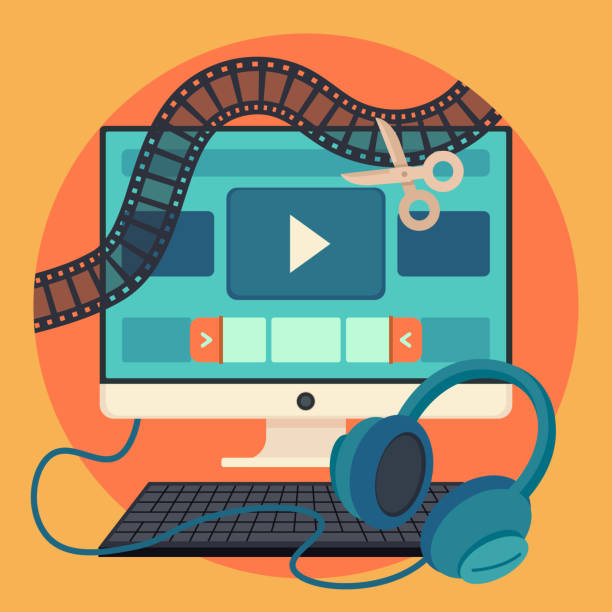Essential how-to on renting vs hiring audio visual charlotte nc
Wiki Article
Recognizing the Incorporation of Audio Visual Technology in Today's Educational Environments
The combination of audio-visual technology in academic setups has actually transformed the mentor and learning procedure. Educators now have accessibility to tools that cater to different learning designs, improving pupil engagement and partnership. The incorporation of these modern technologies offers both opportunities and challenges. Understanding exactly how to properly execute these devices is essential. What techniques can instructors use to take full advantage of the advantages of audio-visual technology in their class?The Development of Audio-Visual Innovation in Education
As instructional requirements advanced over the decades, audio-visual technology undertook considerable transformations that reshaped the understanding environment. Tools such as movie projectors and slide shows were the primary methods of incorporating visual elements right into classrooms. These very early technologies given educators with the capability to present information dynamically, yet they were restricted in accessibility and interactivity.With the development of videotape recorder in the 1970s, class started to integrate recorded lessons, broadening the range of educational resources. The introduction of computers in the 1980s additional revolutionized this landscape, permitting for the creation of multimedia presentations and interactive understanding experiences.
The increase of the net in the 1990s noted a zero hour, making it possible for real-time accessibility to a wide range of audio-visual materials. Today, digital devices such as interactive white boards and on the internet learning systems continue to improve the educational experience, cultivating engagement and cooperation among students.
Advantages of Audio-Visual Equipment for Diverse Understanding Styles
Audio-visual tools play a necessary role in providing to diverse knowing designs by boosting aesthetic understanding and improving acoustic engagement. By including images, videos, and noise, these modern technologies develop an even more comprehensive educational setting. This complex approach permits instructors to deal with the different choices and demands of trainees effectively.Enhancing Visual Understanding
Engagement in the discovering process is markedly enhanced through using audio-visual devices, satisfying different discovering styles. These devices, such as videos, infographics, and interactive presentations, offer aesthetic stimulations that assist understanding and retention. Visual students, specifically, gain from the unification of photos and computer animations, which can simplify complicated concepts and improve understanding. In addition, audio-visual sources can highlight real-world applications, making discovering more relevant and engaging. By integrating shade, activity, and noise, teachers can create a dynamic understanding setting that captures pupils' attention and cultivates much deeper cognitive links. Eventually, the strategic use audio-visual innovation not only supports visual knowing yet likewise improves the general instructional experience for varied students.Improving Auditory Engagement
A significant benefit of integrating audio-visual devices in education is their ability to boost auditory involvement among pupils. These devices, which include multimedia presentations, podcasts, and interactive audio aspects, accommodate different learning styles, especially profiting auditory learners (audio visual charlotte nc). By integrating sound and narrative, educators can produce immersive experiences that capture students' attention and enhance comprehension. This interaction is necessary, as it cultivates a much deeper understanding of the product and advertises retention. In addition, audio-visual devices can assist in collaborative understanding atmospheres, motivating pupils to take part in discussions and share their understandings. Ultimately, the incorporation of audio-visual modern technology not just supports auditory engagement however additionally enhances the overall instructional experience, making finding out more dynamic and reliable for all traineesEnhancing Engagement With Interactive Understanding

Moreover, gamification aspects, such as tests and simulations, can enhance inspiration and retention, making finding out more pleasurable and efficient. These approaches not only promote cognitive engagement but additionally accommodate diverse learning designs, ensuring that all pupils can get involved meaningfully. Consequently, interactive understanding environments promote a sense of community and belonging, eventually bring about improved academic outcomes. Via the integration of audio aesthetic technology, educators can change typical classrooms right into dynamic areas where students grow and proactively shape their educational trips.
Bridging Theory and Exercise With Multimedia Resources
Multimedia sources offer as a crucial web link between academic principles and sensible application in academic settings. By improving interaction, helping with collaborative knowing experiences, and supporting diverse discovering styles, these devices produce a much more inclusive and dynamic knowing atmosphere - audio visual charlotte nc. This method not just cultivates deeper understanding however also prepares trainees for real-world difficulties
Enhancing Involvement Via Multimedia
Engagement in instructional settings substantially enhances when instructors integrate multimedia resources into their teaching techniques. Making use of video clips, podcasts, and interactive presentations boosts the finding out experience, permitting students to get in touch with the material on numerous degrees. Multimedia resources satisfy various learning styles, offering visual, acoustic, and kinesthetic stimulations that can hold pupils' attention better than traditional lecture techniques. Additionally, these sources can streamline intricate concepts, making them more easily accessible and unforgettable. By integrating multimedia, instructors can create a dynamic class setting that promotes inquisitiveness and motivates students. Ultimately, the tactical use audio-visual technology serves to connect the gap between theoretical understanding and practical application, improving the instructional experience for both trainers and pupils.Assisting In Collaborative Discovering Experiences
Numerous researches suggest that collaborative discovering experiences significantly improve trainee outcomes when integrated with multimedia sources. Multimedia tools help with communication among trainees, enabling them to take part in problem-solving and crucial thinking collectively. By utilizing video clip conferencing, collaborative systems, and interactive presentations, educators create atmospheres for team effort and shared understanding. These modern technologies enable students to communicate their concepts efficiently and get instant feedback, promoting a deeper understanding of the subject. Furthermore, multimedia resources can provide intricate principles in more absorbable layouts, advertising conversation and cooperation. Because of this, the combination of collective knowing and audio-visual modern technology not only enriches the instructional experience yet likewise prepares trainees for real-world synergy characteristics, emphasizing the importance of participation and collective knowledge building.Supporting Diverse Discovering Styles
While conventional teaching techniques commonly accommodate a limited series of finding out choices, the integration of audio-visual innovation offers a more inclusive approach to education and learning. By employing multimedia resources such as videos, interactive simulations, and digital presentations, teachers can attend to various discovering styles, consisting of aesthetic, acoustic, and kinesthetic. This versatility enables set apart guideline, making it possible for students to engage with content in means that reverberate with their specific choices. Furthermore, audio-visual tools can facilitate much deeper understanding by supplying multiple representations of intricate concepts. As an outcome, students that might fight with standard techniques can find alternate pathways to success, fostering a much more equitable knowing atmosphere that supports academic success for all learners.Obstacles in Carrying Out Audio-Visual Innovation
Although audio-visual innovation holds fantastic guarantee for boosting academic experiences, its application usually encounters significant challenges. One main issue is the economic problem associated with investing in and keeping such devices, which can stress spending plans, specifically in underfunded institutions. In addition, poor training for teachers can prevent effective assimilation, leaving them ill-prepared to use the technology fully. Technical problems, such as software malfunctions and compatibility issues, might also interfere with lessons and frustrate both educators and trainees. Differing degrees of pupil accessibility to technology outside the class can create differences in learning chances. The possibility for over-reliance on innovation might detract from important teaching approaches, inevitably limiting the academic experience. Attending to these obstacles requires a detailed method, consisting of sufficient financing, expert growth, and equitable accessibility to sources, to guarantee that audio-visual technology can be leveraged successfully in today's academic setups.Finest Practices for Integrating Technology in the Class

Additionally, cultivating an interactive atmosphere with collaborative devices motivates trainee involvement and participation. Using diverse audio-visual sources accommodates numerous discovering styles, fitting aesthetic, acoustic, and kinesthetic learners. Consistently reviewing the influence of modern technology on trainee learning assists instructors refine their methods website and adjust to transforming needs. Ultimately, including students in the choice of technology promotes ownership and motivation. By sticking to these ideal practices, instructors can develop a vibrant class environment that successfully incorporates modern technology and enhances the instructional experience for all students.
The Future of Audio-Visual Modern Technology in Education
As class progressively accept modern technology, the landscape of audio-visual tools in education remains to advance (audio visual charlotte nc). Future advancements are anticipated to focus on better interactivity and customization, permitting teachers to customize discovering experiences to private pupil demands. Innovations such as augmented reality (AR) and digital reality (VR) will likely supply immersive knowing settings, boosting trainee interaction and understanding
Synthetic intelligence (AI) is positioned to play a significant role in audio-visual technology by offering real-time comments and flexible understanding paths. This integration may aid instructors identify and resolve student obstacles better. Cloud-based systems will assist in simpler accessibility to resources and partnership amongst trainees and educators, no matter place.
Along with these technical developments, professional advancement for educators will certainly be important, guaranteeing they are equipped to make use of these devices efficiently. Generally, the future of audio-visual technology in education and learning assures to produce more dynamic, comprehensive, and impactful knowing experiences.
Often Asked Concerns
Exactly How Can Teachers Choose the Right Audio-Visual Equipment for Their Classrooms?
Selecting appropriate audio-visual devices needs instructors to assess their academic objectives, consider pupil requirements, assess offered innovation, and look for referrals from peers or experts, making sure tools successfully boost discovering and interaction within their details classroom setting.What Budget Considerations Are There for Applying Audio-Visual Innovation?
Budget plan factors to consider for carrying out audio-visual modern technology include first purchase expenses, upkeep expenditures, training for team, and possible software program licensing fees. In addition, long-term investment in updates and substitutes ought to also be factored into financial preparation.Exist Particular Training Resources for Teachers on Audio-Visual Equipment?
Many institutions use training sources for educators on audio-visual tools, including on-line programs, workshops, and training guides. These resources intend to boost instructors' skills and confidence in efficiently integrating modern technology right into their mentor methods.Just how Do We Measure the Efficiency of Audio-Visual Innovation in Knowing?
Measuring the efficiency of audio-visual modern technology in learning involves reviewing pupil involvement, understanding, retention rates, and overall scholastic performance. Studies, evaluations, and observational research studies can give valuable understandings into its influence on educational end results.What Prevail Mistaken Beliefs Concerning Audio-Visual Innovation in Education?
Usual misconceptions regarding audio-visual technology in education and learning include the belief that it ensures interaction and learning results, in addition to the assumption that all pupils benefit just as, neglecting private understanding choices and needs.Report this wiki page